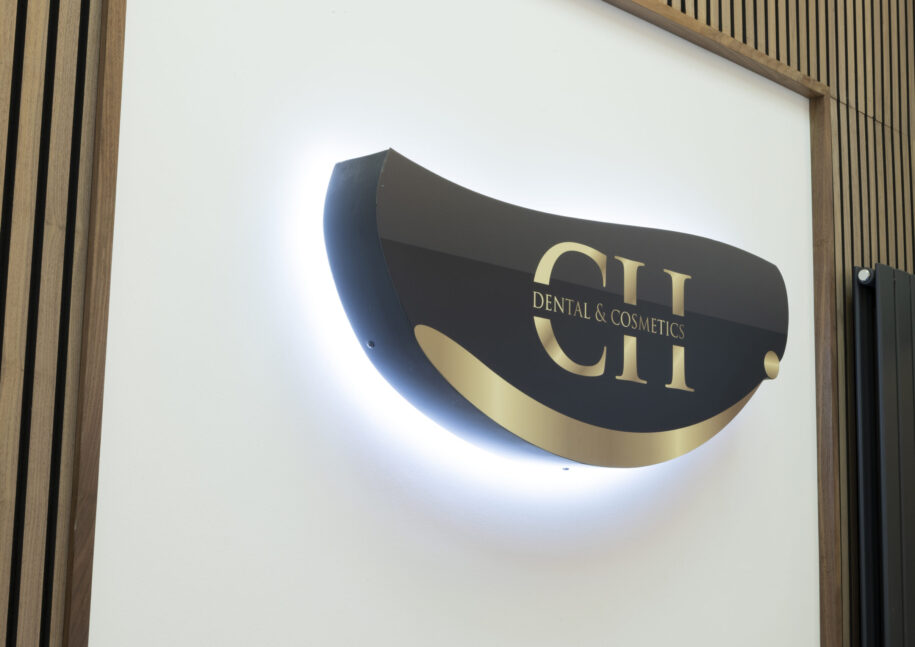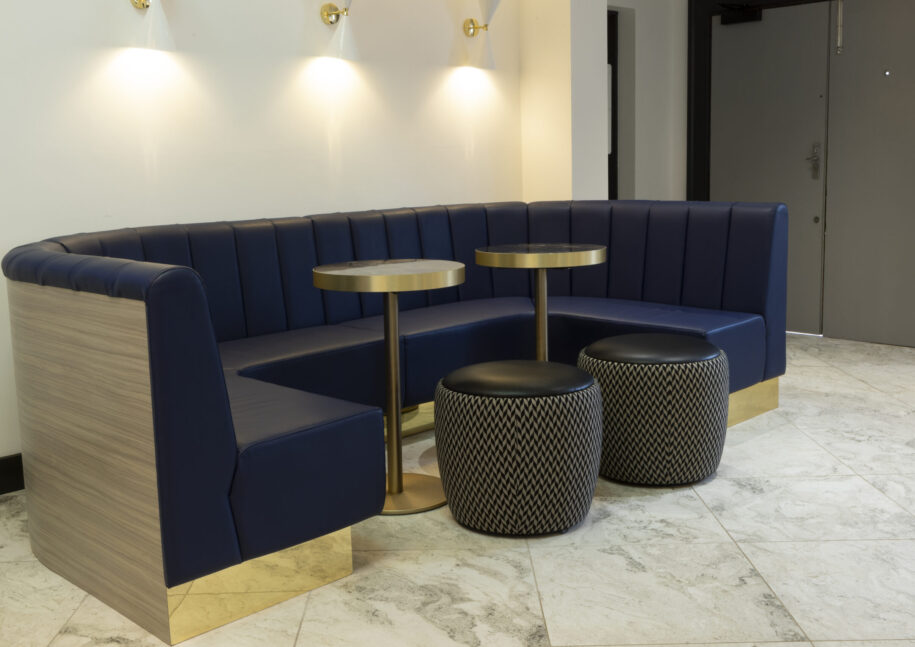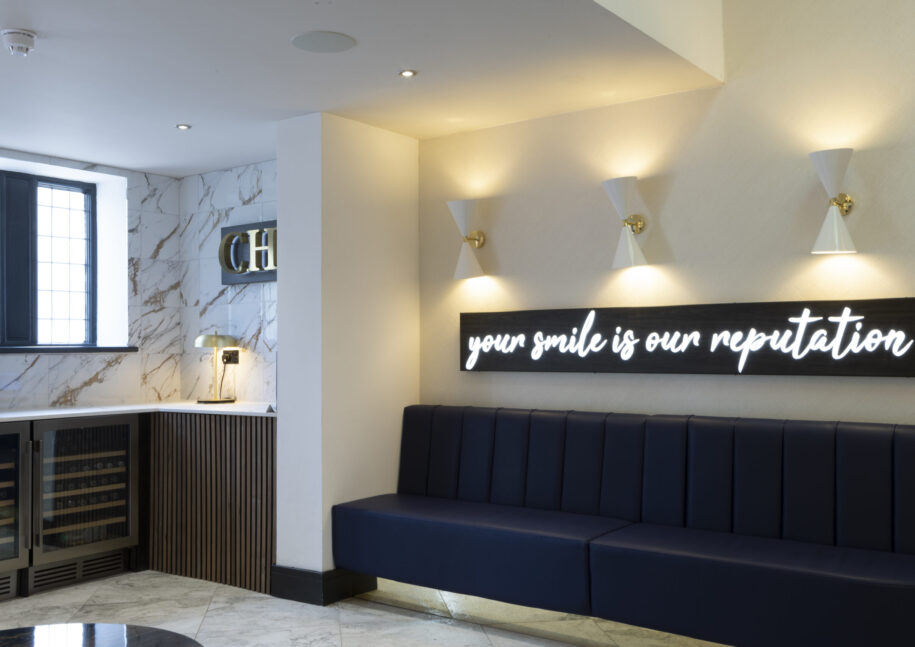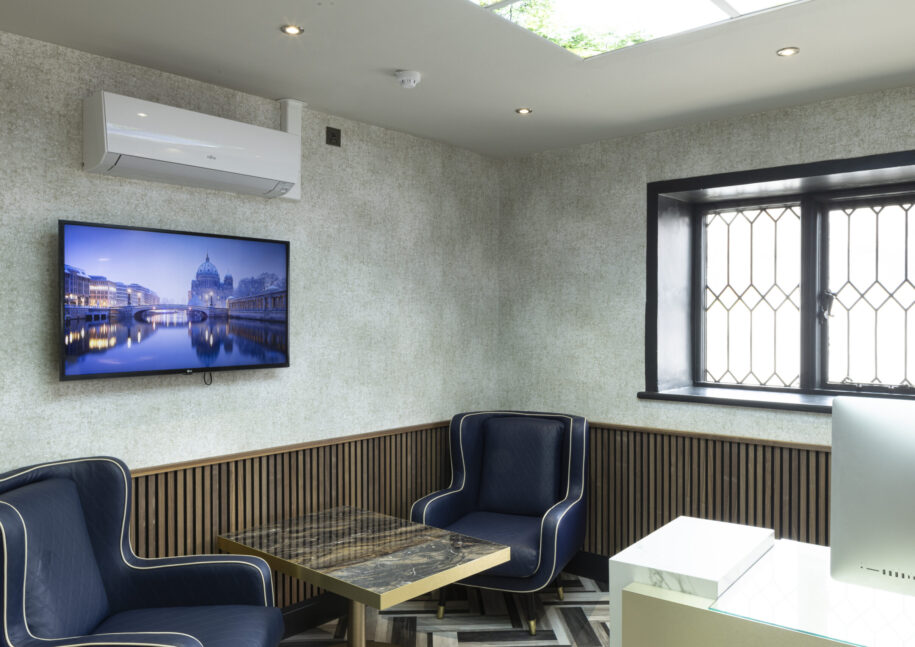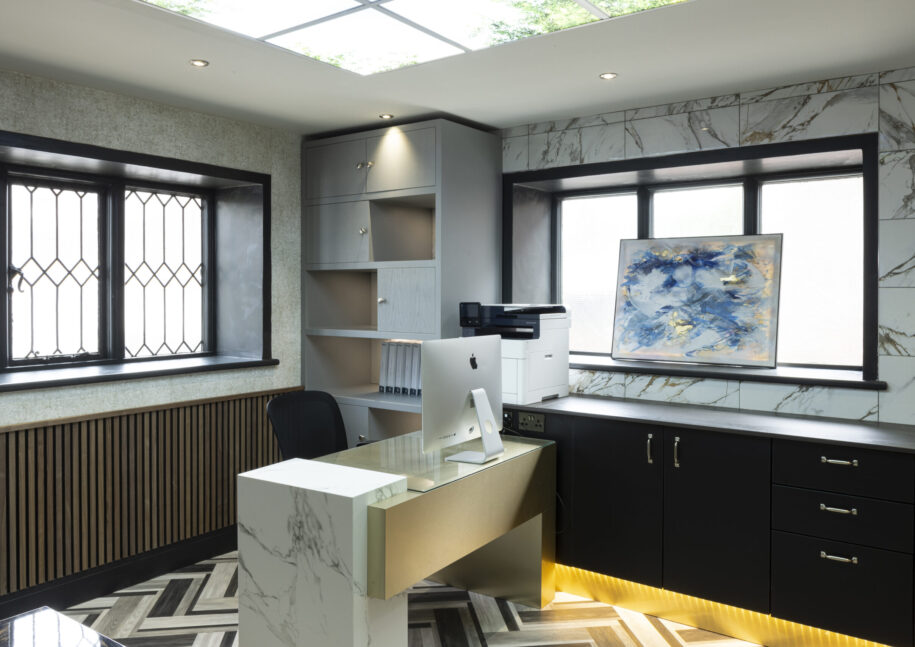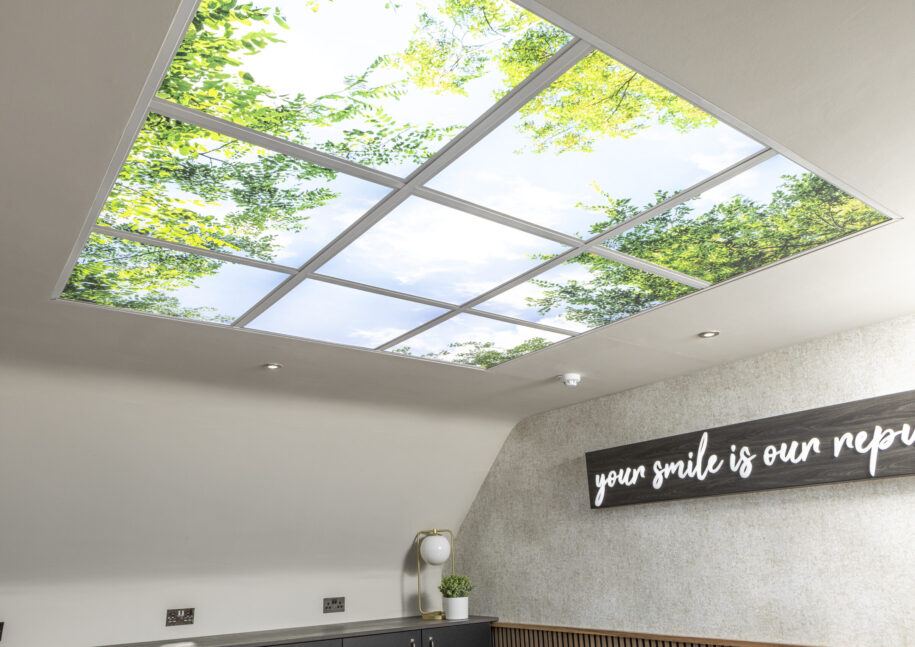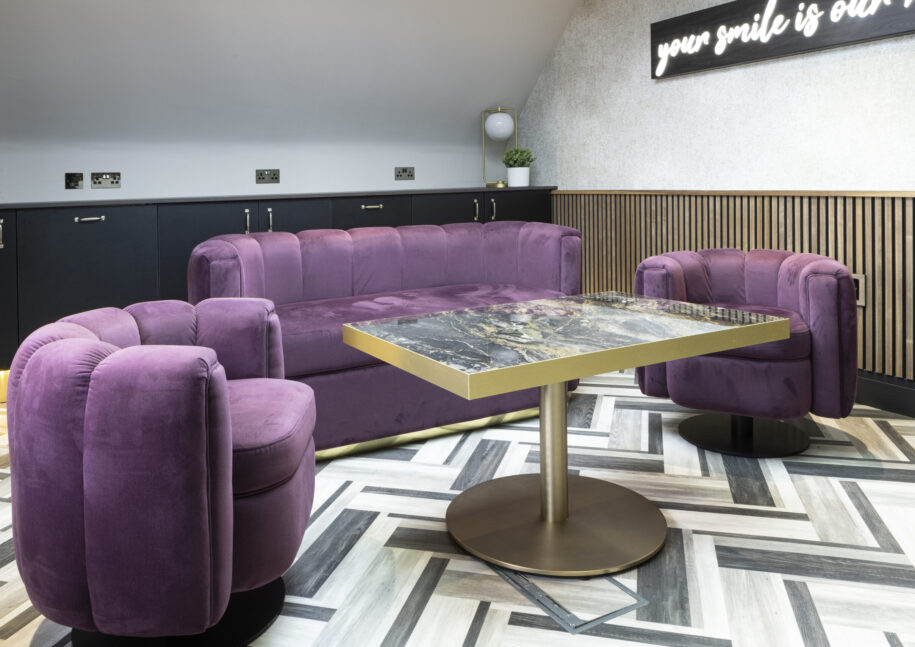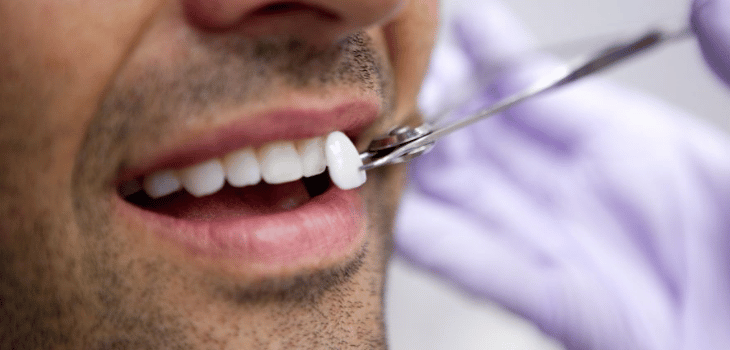
After teeth whitening, veneers are one of the most popular cosmetic treatments available at our Cheadle Hulme dental practice.
In essence, veneers are a non-surgical solution to a whole host of dental problems, including cracked or chipped teeth, stained teeth that can’t be fixed using teeth whitening techniques, slight tooth gaps, or uneven tooth size. Veneers have the ability to restore colour, form and function to your smile fast.
The step-by-step process is explained
Step 1 – The initial consultation
During an initial visit to our dentist in Cheadle Hulme, we’ll have a chat with you to discuss your needs and requirements. We’ll take some digital photos of your existing smile, and using these, we’ll have a good idea of what it is you want to achieve. From the information collected, we’ll develop a fully-customised plan of action to restore your smile to its former glory. Before you leave, you’ll have a thorough understanding of exactly what’s being done, roughly how long it’s going to take, and most importantly, what the outcome is going to look like.
Step 2 – The wax-up process
Once you’ve given us the go-ahead, the next step is to compile a wax mock-up of your smile by taking a variety of impressions. These impressions are then used to create an exact model of your teeth. This model is important because it becomes a basis from which to make your provisional or temporary veneers. Temporaries are normally fashioned from acrylic. Once you are happy with your digital demonstration and your physical wax, we can move on to the preparation stage.
Step 3 – The preparation visit
At this visit, a very small amount of enamel is removed in order to make space for the veneers. The wax-up is used as a guide to ensure that only just enough enamel is reduced to ensure a higher level of accuracy.
Stage 4 – Fitting your temporaries
On the visit that the teeth are prepared, the temporary veneers are fitted. We make these temporaries with the final shape in mind. When fitted, the temporary process gives you a chance to approve the look and appearance of your veneers and to see how they feel in the mouth (a kind of ‘trial smile’ if you like).
At this point, if you’re not feeling totally happy with how your smile looks, then we advise you to talk to us, and we’ll make any necessary adjustments before your permanent veneers are fitted.
Do bear in mind that once you have your permanent veneers, the process can’t be reversed. Typically temporaries don’t have gaps between teeth like proper veneers would, and they may also be a little thicker. This trial period can last a few weeks up to a few months. Once you’re happy and any adjustments have been made, then you give us the go-ahead, and we’ll see that your permanent veneers are made.
Stage 5 – Final fit
On the day of the final fit, the first thing our dentist in Cheadle Hulme will do is remove your temporary veneers, plus any remains of the fixative holding them in place. Next, the teeth and gums are numbed. The porcelain veneers are placed into position using a quick-drying bonding agent, which is applied to the veneer before it’s attached to the tooth. Then using a light wand, light permeates through the veneer to the bonding agent below, removing any moisture and allowing it to set quicker. The final step is to get rid of any excess cement and polishes the veneers to the desired shape in order to complete the look and feel of your perfect smile.
To find out more about veneers, we invite you to come and talk to our team at our Cheadle Hulme Dental. To book a no-obligation appointment, contact us at 0161 486 0743 and start your journey towards a brighter, whiter smile today.
FAQs
Are dental veneers a good idea?
Veneers consist of ultra-thin, shell-like layers of dental porcelain that are placed directly on the outside of your existing teeth. In order to apply the veneer, a tiny amount of the tooth surface is removed (usually less than 1mm) so that the veneer sits flush with the rest of the teeth. This not only allows for better aesthetics but also helps the natural function of the tooth. When the process is completed, the patient will have their normal bite function fully restored.
Our clinic offers minimal preparation veneers as well as no preparation lumineers where the teeth aren’t drilled. Dental veneers are a great treatment for anyone who is discontent with their smile aesthetic and looking for a long-term solution that requires very minimal maintenance.
Are veneers good for your teeth?
Because veneers are individually crafted, it’s almost impossible to tell them apart from the rest of your teeth. Also, because dental porcelain is stain-proof, veneers can resist stains from tea, coffee, red wine, and tobacco far better than natural teeth. In contrast to crowns, fitting veneers means more of the underlying tooth remains intact, so there’s less chance of the tooth becoming compromised.
Veneers are also an efficient way to deal with small tooth gaps, minor twists, and overlaps without having to resort to longer, more complex procedures. Finally – maintenance is simple. Just like your normal teeth, regular brushing and flossing are all that’s required to keep them in tip-top condition.


